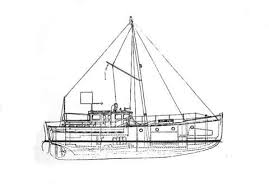SCOTTEDAVIS
Guru
I just read the entire thread, to this point it has more bouncing around then the last week of the final four.
You guys crack me up, seems like a bit of ADHD going on here.
NO 80 HP on each side is not to little hp on a FDH trawler of 40 LWL. Hull speed will be met at less then 75% power and really what more do you need?
There are times when more power is not needed just as there times when you don't need more fuel (you are on fire).
You guys crack me up, seems like a bit of ADHD going on here.
NO 80 HP on each side is not to little hp on a FDH trawler of 40 LWL. Hull speed will be met at less then 75% power and really what more do you need?
There are times when more power is not needed just as there times when you don't need more fuel (you are on fire).

 .
. 